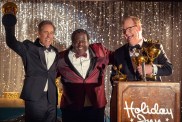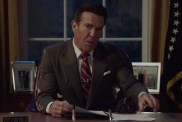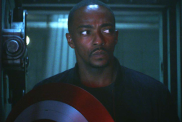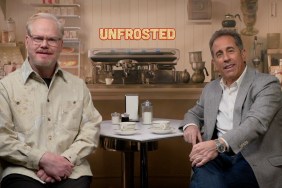
Now, with the dust settled and the release of Matthijs Van Heijningen’s TheThing well behind us, Shock thought it would be a good time to catch up with Heisserer and join him to reflect on how he thought his work has panned out.
How did you get to where you are today? Can you tell us about selling your first successful pitch?
Eric Heisserer: I began screenwriting in the late 1990s, but my first real break was with my eleventh feature spec in 2005. It was based on an online story I wrote called “The Dionaea House,” about a series of identical houses scattered around the country, somehow strangely connected to each other. Sort of a Lovecraftian story. The spec was purchased by Warner Brothers and came very close to getting made — we had sets built in Toronto when the studio pulled the plug after losing money on another movie priced at the same budget.
From there, I landed a few assignments around town. Adaptations. Some rewrites. This is the “in the trenches” writing work that the public never sees, but it’s typically how a writer earns their stripes in the feature world. Sometimes you do that for a year, sometimes three years. Building relationships. Waiting for the right opportunity to open up.
Can you tell us anything about your next project?
Heisserer: My next project is Hours, based on a short story of mine. I wrote the script and I’m directing it this April in New Orleans. It’s not a horror movie, but it’s a passion project that means a lot to me, and I’ve developed new muscles as a storyteller because of it. People might think it’s a movie about the Katrina disaster, but it’s not. It’s about what it means to be a father.
What is it like as a screenwriter being trusted to rewrite some of horror cinema’s most celebrated stories?

Everyone has at least some understanding of the language of horror. Some of us have a deep vocabulary; we know there are a million ways to be scared. Psychological horror works subtly, and often the most pervasive fears are ones not entirely shown on the screen but instead imagined. Viewers leaving test screenings of Seven were “repulsed” by the imagery of Gwyneth Paltrow’s head in a box — but that was never shown in the movie. Our brains are our own worst enemy.
There are also people who believe horror works best with jump scares — false or otherwise — with a big music sting. “Boo!” moments. That’s what works for them, and it’s the tool they clutch when making horror movies. As a horror writer, I do my best to suss out what kind of horror fan I’m potentially working for, but sometimes everyone in the room is fluent in the genre but we’re foiled much later by test screenings or some other force that alters the final product.
Regardless, it always comes back to doing good work. Be the best craftsman you can, keep your head down, and honor your elders. I’ve been lucky enough to work with some of the smartest minds in the genre on a few of these projects, and a good movie is absolutely a team effort.
Are you given much artistic freedom when writing huge reboots like Elm Street and The Thing?
Heisserer: I don’t think I was hampered by too many factors on either Elm Street or The Thing. With Elm Street, I knew going in that my employers wanted a movie that followed the footsteps of Wes Craven’s original at first, and then diverged toward a new path. I was also rewriting Wesley Strick, who had engineered the backstory of Krueger and the idea that he would seem a victim of the town’s wrath, wrongly accused, until the big reveal in the end. That was another element I was given. Otherwise, in the early drafts, I had plenty of creative freedom but very little time to deliver. I think I pulled a series of all-nighters with the first draft, which in a way helped me write those characters who were also pulling all-nighters. I introduced the concept of microsleep. I played around with various nightmare worlds.
That said, I can’t take much credit for the final movie, save for a few key concepts and a handful of lines of dialogue. Things were altered during production, during reshoots, and throughout editing — as happens with any big project like this. I know a lot of fans love the new version, and I’m happy for them, but Elm Street was an enormous undertaking for everyone, and no one felt the pressure more than Jackie Earle Haley. He and I both felt like we were borrowing the keys to Wes Craven’s car. It frustrates me to this day that Craven was not given a “story by” credit for the reboot. I think he deserves it — so many moments Sam Bayer shot gave tribute to Craven’s original, and the first twenty minutes line up from a story perspective. But that’s more of a gripe I have with the way credits are determined. It rarely paints the whole picture.

Heisserer: Final Destination 5 was a labor of love for me, and oddly one of the most challenging screenplays I’ve ever written. Some of that had to do with the fact that it was the fifth installment, and dozens of deaths had been choreographed already. It’s a bit like trying to play a round of Family Feud, but you can’t use the top twelve answers. Working on FD5 was the kind of creative challenge I love, because it forces you to be really imaginative. And while the kills are the spectacle in the franchise, I was more interested in pushing a moral dilemma on the characters. It wasn’t enough just to have them waiting to die off. I wanted them to be presented with a way out, and then question: Could I do it? Could I kill someone if it meant saving myself?
The cast, the producers, the director and the studio all went in together on that one to make a movie that was fun, and respectful of the franchise, and I’m proud to have worked with all of them.
How much of a challenge was it rewriting The Thing? How happy are you with the finished film?
Heisserer: The Thing was a special challenge, and it ate up eighteen months of my life. My draft from December of 2009, before production began, is one of the few scripts I’m honestly proud of in its entirety, and I tend to be unforgiving of my writing. I would love to see that draft published, even though it’s a different beast from the released movie. Matthijs, the director, did an incredible job throughout production, too, and our cast delivered great performances. There is probably an hour of extra scene work from the various Norwegians, as well as a lot of great little character-centric moments with Carter and his crew, all of which just didn’t work with test audiences or had to be cut for other reasons.
I think it’s probably unfair to the rest of the team involved in a movie when you ask the writer about the finished film, because as writers we’re on board long before everyone else. We end up seeing all the character development, the little bits of logic and plot we nestle into a scene, and then for one reason or another, it’s left out of the final cut. Does the movie make sense without it? Probably. Maybe no one else misses it. These are the kinds of choices that get made with every picture. But they linger in the writer’s mind like splinters.

I probably get the most feedback from this movie — and some people love the film, which just goes to show I’m agonizing over stuff that ultimately didn’t matter — but I will always wish I had gotten to see more of the immense amount of work that just didn’t find a home in the released version.
What are your favorite remakes?
Heisserer: I have a few favorites when it comes to remakes. In horror, I feel like Matt Reeves did a very artistic job with Let Me In. Matt is a real craftsman when it comes to filmmaking. He pays attention to details. He doesn’t hang out in video village — he grabs a little portable monitor and gets in close with the actors. I admire his work ethic. Another great remake (non-horror) I love is The Thomas Crown Affair. What a fun ride that one is.
Any gems of wisdom for struggling writers out there?
Heisserer: Advice to writers? Keep working on original material. Even when it seems the only jobs you’ll get are for existing franchises. The spec market is coming back with a vengeance, and studios are opening up to new, original ideas now. It’s a good time to be writing your own stories. It’s why I got in this business, and it’s why I’m directing my own feature this year. Focus on the craft; on the work, and you will make your way into this career.
We’d like to thank Heisserer for taking the time to chat with us!









